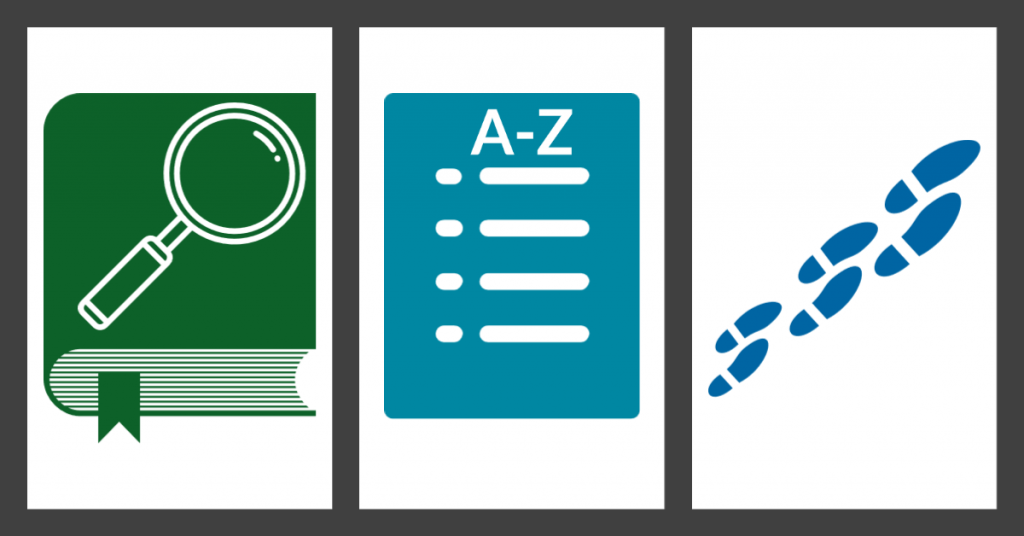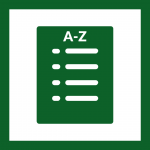

Would you like to listen to this month’s post?
Referencing Styles

There are many different types of referencing styles. Each has developed for use in a specific academic discipline and uses different combinations of punctuation and data ordering.
In ATU Sligo, the most common style of referencing used is Harvard. It’s one of the author-date styles of referencing, because the author’s family name and the year of publication are key pieces of data for this system.
For more information on this system, please see our previous post on it. Or check out our dedicated LibGuide on this topic.
This isn’t the only style of referencing used in ATU Sligo though. Always check which style your lecturer wants before you start your project. It’s much easier to set your references to the style needed at the beginning of your project, than at the end.
Harvard Style and Referencing Your Work

This style of referencing has 4 components:
- Inline citations
- Quotations
- Reference List
- Bibliography
Inline Citations
This is used whenever you refer to another person’s work or ideas, but do not use a direct quote. Instead, after you have finished talking about another author’s idea, by paraphrasing or summarising that idea in your own words, you must mark this usage. To do this enclose the following information in round brackets and place it after your referral:
- Author’s family name
- Year of publication
- Page number or the URL details
Simple Text Example
According to a recent survey on consumer habits, the popularity of vanilla ice-cream has fallen in recent years (Bloggs, 2022, p. 22).
Quotations: Short and Long
This form of citation is used whenever you use words directly from the original work of someone else. This can be a long or a short quotation. They are treated slightly differently.
Short Quotations
Quotations of 2-3 lines long are considered short quotations and can be contained within the main body of your text. The words should be contained within quotation marks and followed by the same use of author’s family name and year of publication as an inline citation.
Short Quote Example
According to Dr Bloggs, “the volume of units of vanilla ice-cream sales per capita has fallen dramatically over the last five years, with consumers opting for different flavours of ice-cream over the previous favourite” (Bloggs, 2022, p.25).
Long quotations
These are a direct use of another author’s words, which is longer than three lines of text. These longer quotations should be removed from the body of your text and placed in an indented paragraph of their own.
Long quotations do not have quote marks around them, as setting them apart from the main body of text is meant to show that these are not your own words. The same information about the author, year and page number should also be included.
Long Quote Example
While sales of chocolate ice-cream have held steady over the last five years, with an average market-share of 20% per annum, sales of other ice-cream flavours have increased drastically. Fruit sorbets, through not technically ice-creams, now hold 30% of the market. Other flavours such as pistachio, hazelnut and toffee have doubled in sales. (Bloggs, 2022, p.35).
Harvard: Resource Lists

In Harvard style referencing, two lists of resources should be included. One is called a Reference List and one is called a Bibliography.
Both a Reference List and a Bibliography include traditional resources like books, chapters, academic articles, and conference papers. You should also include digital resources like videos, blogs and websites that you have consulted. If you refer to exhibitions, performances, and other live events, in your work, these too must be referenced.
The list is always organised in an A-Z style. You use the first letter of the author/creator’s family name as the basis for building this list.
If you’re not sure how to build such a reference, then Cite-Them-Right is a great place to start.
Reference List
This is a list of all the resources that you have used directly in your project. Either in your literature review or by citing it in some way (with an inline citation or a quote). It occurs before a bibliography.
Bibliography
A bibliography is a list of all the background reading and other resources which you have consulted during your research on this project.
Next Steps

If you’d like to explore more about this topic:
- Check out our dedicated LibGuide to Referencing
- Pick up a print copy of our in-house referencing guides, free-of-charge, beside the Library Desk
- Try out our referencing support platform Cite-Them-Right
- Or get yourself ready for a big project with our citation management platform EndNote
